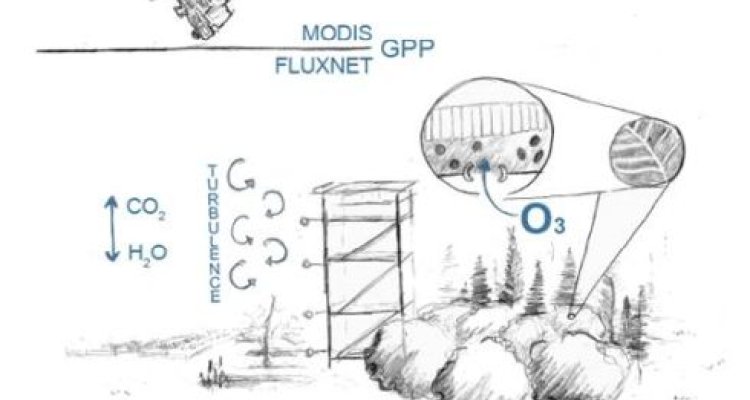
Colloquium
Assessing Ozone Deposition Impacts on Ecosystem Scale Vegetation Productivity Using Ozone Deposition Flux Estimates and Modis Data
By Anne-Wil van den Berg
Abstract
Troposheric ozone (O3) affects Earth’s climate as important greenhouse gas and as secondary atmospheric pollutant with adverse impacts on (semi-)natural ecosystems at cell- to ecosystem scales. Its phytotoxic traits lead to changes in photosynthesis and transpiration processes affecting vegetation productivity. This study consists of two parts. First, the study aims to evaluate the MODIS gross primary production (GPP) product (MOD17A2H) for O3 risk assessments for multiple European sites, since MODIS GPP is known to rely on extensive external input data. Comparison of MODIS GPP to in situ GPP inferred from flux towers, using standardised values, showed that MOD17A2H decently estimates relative change in GPP (Spearman’s p=0.690). Second, the study makes a first attempt to combine high resolution MODIS GPP fluctutations, in situ measurements, and synthetic O3 deposition fluxes (SynFlux) to make quantitative O3 impact estimates on vegetation productivity at an ecosystem scale. Recent publication of the SynFlux dataset allows for a large scale flux approach that corrects for the environmental constraints on stomatal O3 uptake. The study also aims to see if this approach can complement large scale modelling studies by helping to establish robust dose-response relationships (DRR) for whole vegetation types, that currently are only available for few specific species. Multiple linear regression (MLR) models were used to quantify the effects of O3 on GPP for each vegetation type. Significant differences in sensitivity were found across vegetation typs. Decreases in GPP of 5.0% and 2.0% for every increase in uptake were found for evergreen needleleaf and mixed forests respectively. This approximately corresponded to GPP reductions of 19.6% and 10.1% over an average growth season between 2000-2014. In contrast, positive relations of GPP to O3 were found for cropland, deciduous broadleaf forest, evergreen broadleaf forest, grassland, and wetland areas. These positive response are thought to be related to:
- the linear relationship between GPP and stomatal conductance,
- a misrepresentation of GPP anomalies by the MODIS GPP product,
- the use of POD0 (no critical levels), and
- potential nitrogen-effects influencing O3 sensitivity of vegetation.
These results highlight that there is a strong need to take into account the plants ability to detoxify O3 through establishing critical levels for O3 uptake of complete vegetation types before it is possible to accurately assess O3 flux impacts on whole vegetation types and establish robust DRRs. Besides, it is strongly recommended for future studies to consider other remote sensing GPP estimates (e.g. SIF or microwave-based GPP estimates) and N-effects.